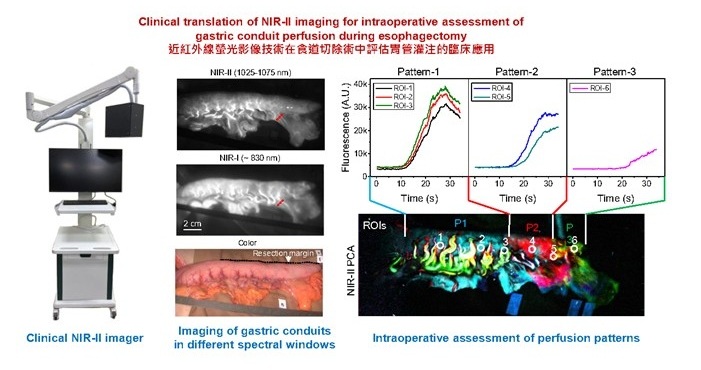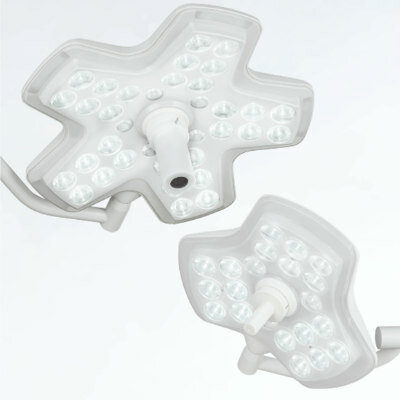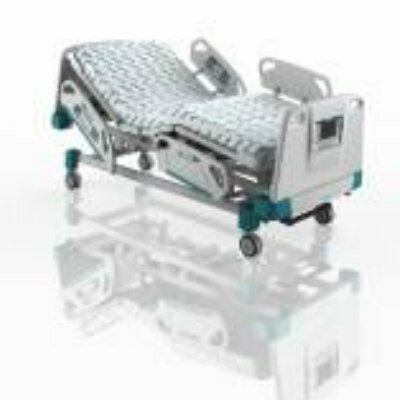Prone Positioning Not Relevant to Survival Rate in Patients with ARDS
|
By HospiMedica International staff writers Posted on 30 Nov 2009 |
Prone positioning during mechanical ventilation may not improve survival duration in patients with acute respiratory distress syndrome (ARDS), according to a new study.
Researchers at the Ospedale Maggiore Policlinico di Milano (Italy) conducted the multicenter randomized Prone-Supine II trial to evaluate possible outcome benefits of prone positioning in patients with ARDS and moderate or severe hypoxemia. A total of 342 adults with ARDS receiving mechanical ventilation at 23 centers in Italy, and two in Spain, were enrolled in the study, and were prospectively stratified into subgroups with moderate and severe hypoxemia. The participants were randomly selected to supine positioning (174 patients) or prone positioning for 20 hours per day (168 patients) during ventilation. The main endpoint of the study was 28-day all-cause mortality, and secondary endpoints were 6-month mortality and mortality at intensive care unit discharge, organ dysfunction, and complication rate associated with prone positioning.
The researchers found that for the overall entire study population evaluated between February 2004 and June 2008, prone and supine positioning were associated with similar mortality rates at 28 days and six months; however, the prone group had a significantly higher complication rate. For patients with moderate hypoxemia, outcomes were also similar in the prone and supine groups at 28 days and at 6 months. For patients with severe hypoxemia, 28-day mortality rate was 37.8% in the prone group and 46.1% in the supine group, and six-month mortality rate was 52.7% and 63.2%, respectively. Positioning was not associated with any apparent differences in median sequential organ failure assessment (SOFA) scores, ventilator-free days, or intensive care unit length of stay. The study was published in the November 11, 2009, issue of the Journal of the American Medical Association (JAMA).
"Do the findings of this trial, together with those of previous studies, represent the end of the prone position technique?” inquired lead author Paolo Taccone, M.D., and colleagues of the department of anesthesia. "Undoubtedly, the data of the present trial together with previous results clearly indicate that prolonged prone positioning, in the unselected ARDS population, is not indicated as a treatment. However, its potential role in patients with the most severe hypoxemia, for whom the possible benefit could outweigh the risk of complications, must be further investigated.”
Related Links:
Ospedale Maggiore Policlinico di Milano
Researchers at the Ospedale Maggiore Policlinico di Milano (Italy) conducted the multicenter randomized Prone-Supine II trial to evaluate possible outcome benefits of prone positioning in patients with ARDS and moderate or severe hypoxemia. A total of 342 adults with ARDS receiving mechanical ventilation at 23 centers in Italy, and two in Spain, were enrolled in the study, and were prospectively stratified into subgroups with moderate and severe hypoxemia. The participants were randomly selected to supine positioning (174 patients) or prone positioning for 20 hours per day (168 patients) during ventilation. The main endpoint of the study was 28-day all-cause mortality, and secondary endpoints were 6-month mortality and mortality at intensive care unit discharge, organ dysfunction, and complication rate associated with prone positioning.
The researchers found that for the overall entire study population evaluated between February 2004 and June 2008, prone and supine positioning were associated with similar mortality rates at 28 days and six months; however, the prone group had a significantly higher complication rate. For patients with moderate hypoxemia, outcomes were also similar in the prone and supine groups at 28 days and at 6 months. For patients with severe hypoxemia, 28-day mortality rate was 37.8% in the prone group and 46.1% in the supine group, and six-month mortality rate was 52.7% and 63.2%, respectively. Positioning was not associated with any apparent differences in median sequential organ failure assessment (SOFA) scores, ventilator-free days, or intensive care unit length of stay. The study was published in the November 11, 2009, issue of the Journal of the American Medical Association (JAMA).
"Do the findings of this trial, together with those of previous studies, represent the end of the prone position technique?” inquired lead author Paolo Taccone, M.D., and colleagues of the department of anesthesia. "Undoubtedly, the data of the present trial together with previous results clearly indicate that prolonged prone positioning, in the unselected ARDS population, is not indicated as a treatment. However, its potential role in patients with the most severe hypoxemia, for whom the possible benefit could outweigh the risk of complications, must be further investigated.”
Related Links:
Ospedale Maggiore Policlinico di Milano
Latest Critical Care News
- AI-Enhanced Wearables Could Transform Type 2 Diabetes and Prediabetes Care
- Breathable Electronic Skin Paves Way for Next-Generation Wearable Devices
- AI Transforming Colon Cancer Diagnosis
- Ventricular Assist Device Offers Long-Term Use in Children Waiting for Donor Heart
- Precision Approach Improves Immunotherapy Effectiveness for ICU Patients with Sepsis
- Soft Robots Could Donate Their Heart to Humans
- Bioadhesive Strategy Prevents Fibrosis Around Device Implants on Peripheral Nerves
- Miniature Non-Invasive Robotic Catheters to Improve Infertility Treatments
- Stick-On Patch Monitors Baby's Movements In Utero
- EEG-Based AI Technology Accurately Diagnoses Alzheimer’s and Dementia
- Robot Lymphatic System Paves Way for Self-Powered Wearables and Machines
- Focused Ultrasound Technique Successfully Treats Pediatric Brain Cancer
- Nasal Drops Fight Brain Tumors Noninvasively
- AI Helps Optimize Therapy Selection and Dosing for Septic Shock
- Glowing Bacteria ‘Pills’ for Detecting Gut Diseases Could Eliminate Colonoscopies
- Skin-Permeable Polymer Patch Delivers Insulin Non-Invasively Through Skin
Channels
Surgical Techniques
view channel
3D-Printed Blood Vessel Scaffolds Could Transform Heart Bypass Surgeries
A tiny, opaque tube held up in a lab may look unremarkable at first glance, but its microscopic surface features could mark a meaningful step forward in heart bypass surgery. Measuring just about one centimeter... Read more
Novel Imaging Technique Helps View Blood Perfusion During Esophageal Surgery
Esophagectomy is a complex and high-risk surgery often required for esophageal cancer, with anastomotic leakage remaining one of its most serious complications. This defect at the surgical suture line... Read more
Minimally Invasive Surgery Proven Safe and Effective for Complex ‘Whipple’ Procedure
Tumors of the pancreatic head often require a highly complex operation known as pancreatoduodenectomy or the Whipple procedure. This surgery involves removing multiple structures and creating several internal... Read more
Catheter-Based Procedures Offer Less Invasive Option for Treatment of Valvular Disease
Valvular heart disease, caused by tight or leaky valves between heart chambers, affects up to 10% of older adults and leads to more than 120,000 deaths globally each year. Traditional open-heart surgery... Read morePatient Care
view channel
Revolutionary Automatic IV-Line Flushing Device to Enhance Infusion Care
More than 80% of in-hospital patients receive intravenous (IV) therapy. Every dose of IV medicine delivered in a small volume (<250 mL) infusion bag should be followed by subsequent flushing to ensure... Read more
VR Training Tool Combats Contamination of Portable Medical Equipment
Healthcare-associated infections (HAIs) impact one in every 31 patients, cause nearly 100,000 deaths each year, and cost USD 28.4 billion in direct medical expenses. Notably, up to 75% of these infections... Read more
Portable Biosensor Platform to Reduce Hospital-Acquired Infections
Approximately 4 million patients in the European Union acquire healthcare-associated infections (HAIs) or nosocomial infections each year, with around 37,000 deaths directly resulting from these infections,... Read moreFirst-Of-Its-Kind Portable Germicidal Light Technology Disinfects High-Touch Clinical Surfaces in Seconds
Reducing healthcare-acquired infections (HAIs) remains a pressing issue within global healthcare systems. In the United States alone, 1.7 million patients contract HAIs annually, leading to approximately... Read moreHealth IT
view channel
EMR-Based Tool Predicts Graft Failure After Kidney Transplant
Kidney transplantation offers patients with end-stage kidney disease longer survival and better quality of life than dialysis, yet graft failure remains a major challenge. Although a successful transplant... Read more
Printable Molecule-Selective Nanoparticles Enable Mass Production of Wearable Biosensors
The future of medicine is likely to focus on the personalization of healthcare—understanding exactly what an individual requires and delivering the appropriate combination of nutrients, metabolites, and... Read moreBusiness
view channel
Philips and Masimo Partner to Advance Patient Monitoring Measurement Technologies
Royal Philips (Amsterdam, Netherlands) and Masimo (Irvine, California, USA) have renewed their multi-year strategic collaboration, combining Philips’ expertise in patient monitoring with Masimo’s noninvasive... Read more
B. Braun Acquires Digital Microsurgery Company True Digital Surgery
The high-end microsurgery market in neurosurgery, spine, and ENT is undergoing a significant transformation. Traditional analog microscopes are giving way to digital exoscopes, which provide improved visualization,... Read more
CMEF 2025 to Promote Holistic and High-Quality Development of Medical and Health Industry
The 92nd China International Medical Equipment Fair (CMEF 2025) Autumn Exhibition is scheduled to be held from September 26 to 29 at the China Import and Export Fair Complex (Canton Fair Complex) in Guangzhou.... Read more













